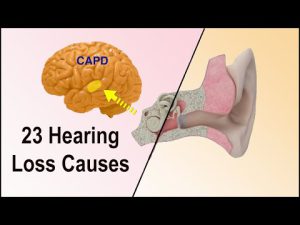
Problems After Ear Syringing
Problems After Ear Syringing, also known as ear irrigation, which is a common procedure used to remove earwax buildup from the ear canal, do happen. Ear syringing is necessary because excessive earwax can cause hearing loss, earaches, and other ear-related discomforts. Although it is a routine treatment, and is often carried out safely, it can come with uncommon complications that can cause serious harm to the patient The procedure is simple, but it is usually performed by a medical practitioner.
The practitioner uses an ear syringe, a handheld tool that sprays water into the ear through a nozzle, to help loosen and flush out the wax build-up. The water used for the procedure is usually at body temperature, and it can be mixed with hydrogen peroxide, sodium bicarbonate, or saline. These solutions help to soften the wax, making it easier to remove.
Ear syringing is a common procedure to remove ear wax, but it can also cause some problems. According to the search results, some of the common problems after ear syringing are listed below.
Expect these Problems After Ear Syringing
Infection: Syringing removes the natural protective layer of the ear canal and makes it more prone to bacteria and fungi. This can lead to otitis externa, which is inflammation and infection of the outer ear.
Trauma: Syringing can damage the delicate skin of the ear canal and the eardrum itself. This can cause pain, bleeding, perforation, or scarring.
Vertigo: Syringing can stimulate the nerves that control balance and cause dizziness, nausea, or vomiting.
Tinnitus: Syringing can trigger or worsen ringing or buzzing in the ears, which can be temporary or permanent.
Hearing loss: Syringing can push the wax deeper into the ear canal or cause swelling or inflammation that blocks the sound waves. This can result in temporary or permanent hearing loss.
Serious Complications
There has been other cases of rare, but serious complications, have been reported. These complications can be as mild as discomfort and ear infection, but as severe as perforated eardrums and complete hearing loss. These complications are more common in patients with certain ear problems, such as a narrow ear canal. Perforated eardrums, in particular, can occur if the syringe is used with too much force or inserted too deeply into the ear canal. This can cause a rupture in the eardrum, leading to bleeding, pain, and hearing loss. If the perforation is severe, it may require surgery to repair the eardrum.
Another rare complication is vertigo, a condition that causes dizziness and loss of balance. This can be caused by the rapid flushing of water into the ear, which can trigger a sudden change in the inner ear that affects balance. Nausea and vomiting can also occur during or after the ear syringing procedure, especially if the patient’s inner ear is sensitive. These symptoms usually resolve within a few hours.
In conclusion, it is essential to recognize that ear syringing is a common procedure with relatively uncommon complications. These complications can range from mild discomfort to severe hearing loss. It is therefore essential to undergo this procedure only when it is necessary and under the guidance of a qualified medical practitioner. Patients with underlying ear problems should seek medical advice before undergoing this procedure.